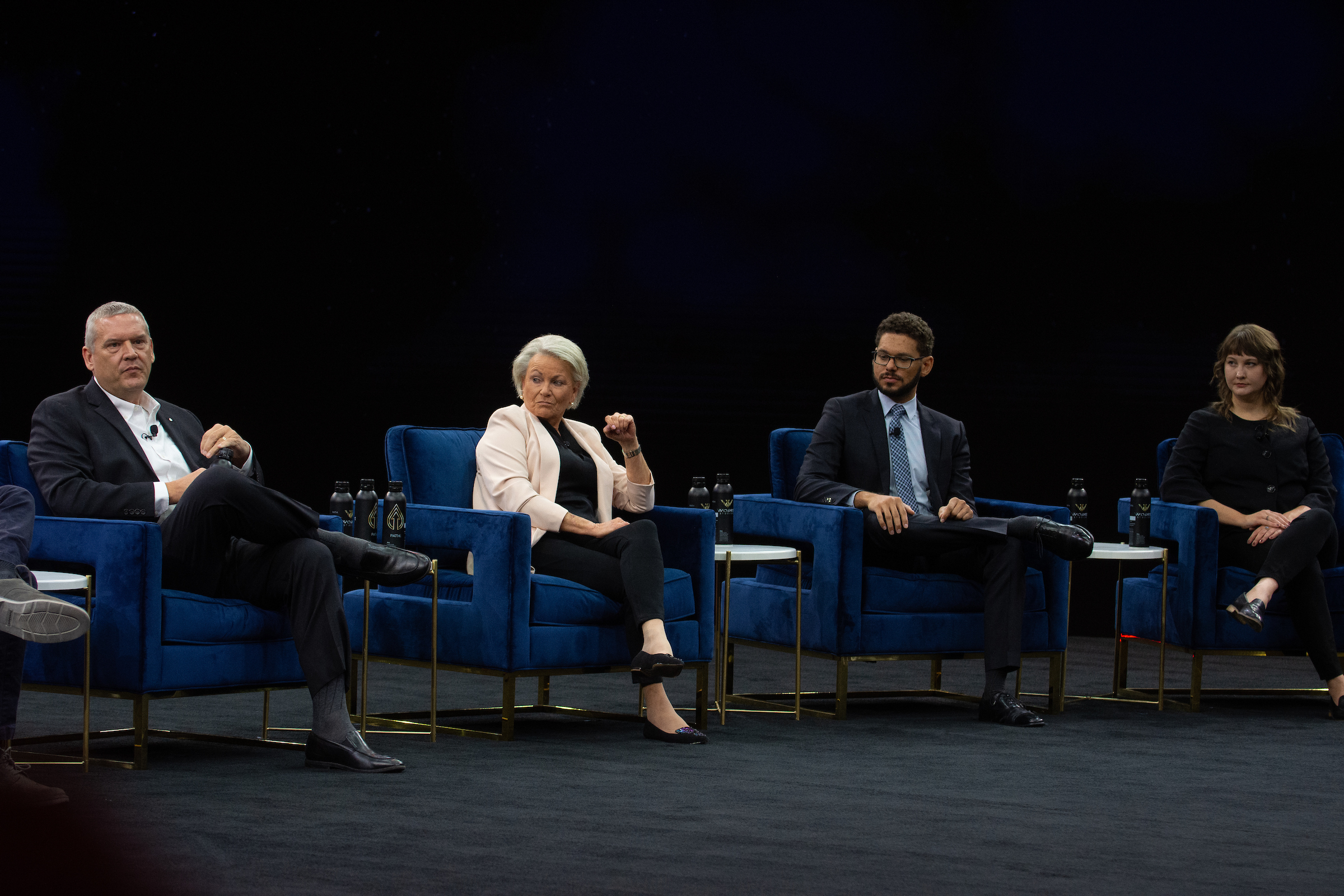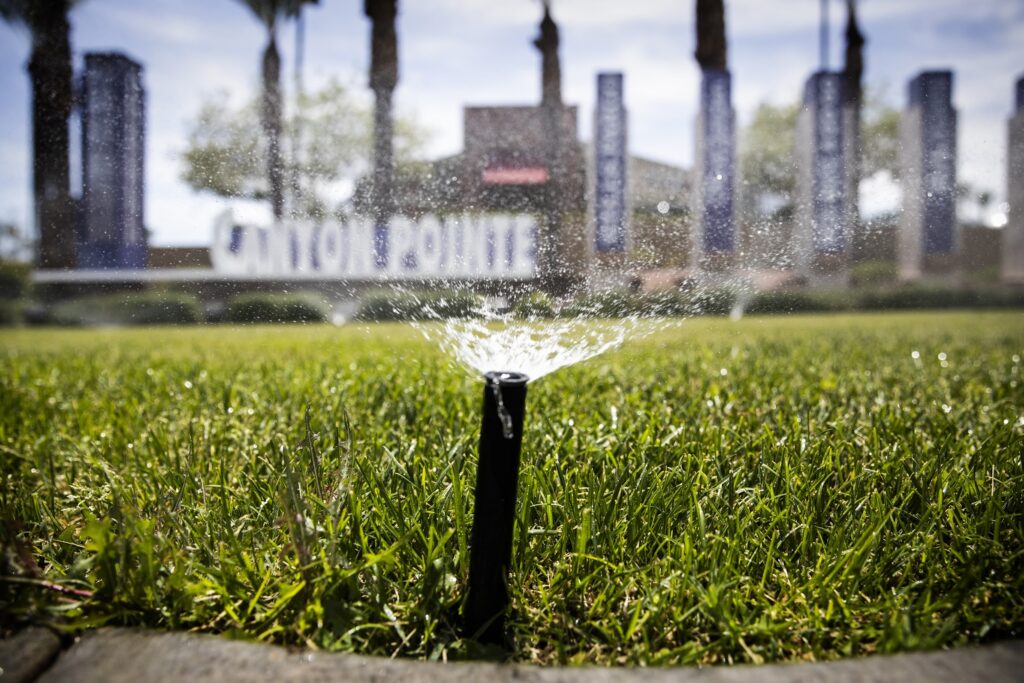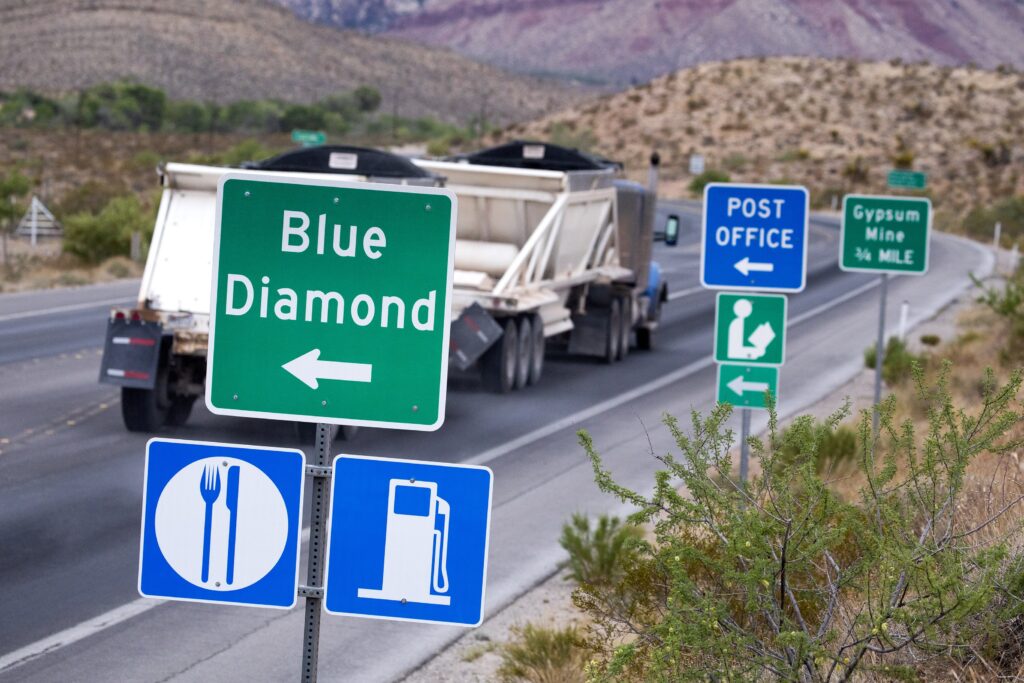‘We haven't failed yet:’ With a new water year, Colorado River remains in crisis

Good morning from Tonopah, and welcome to the Indy Environment newsletter.
As always, we want to hear from readers. Let us know what you’re seeing on the ground and how policies are affecting you. Email me with any tips or suggestions at [email protected]
To get this newsletter in your inbox, subscribe here.
Nearly four months have passed since federal officials issued an ultimatum to Colorado River managers: Come to a consensus on large-scale water cuts, or we will take unilateral action.
A deadline of mid-August came and went. Now, approaching mid-October, there is still no deal on the table to stabilize the Colorado River’s shrinking reservoirs, which includes Lake Mead, sitting at about 28 percent of capacity. Without large-scale cuts, forecasters have warned that the reservoir is at risk of falling to levels that threaten water deliveries and hydropower production.
To be sure, Colorado River negotiators are continuing to meet, including at a water symposium in Santa Fe last month. And some proactive proposals are being floated. Just yesterday, California offered a plan to cut about 9 percent of its total use, as CalMatters' Rachel Becker reported. And KUNC’s Luke Runyon reported last week that the federal government is calling on states to account for water lost to evaporation, which would require cuts. But they are giving the states a runway — until the end of 2024, a long way from the August deadline that was contemplated this summer.
Downstream of Lake Mead, California and Arizona constitute most of the water consumed. Yet as the University of New Mexico’s John Fleck explained in a recent blog post, the two states, and the federal government, are “boxed in” for a variety of complicated and interwoven policy reasons, despite the reality that, as he puts it, “absent a big snowpack, I don’t see how this ends well.”
On Saturday, which happened to be the start of the new water year, we spoke with four Nevada water experts about what it means for the state and how Nevada is positioned moving forward. The panel was part of IndyFest, the annual conference hosted by The Nevada Independent (the audio of the conversation is posted below).
“The seven states had a really, really bad summer,” John Entsminger, general manager of the Southern Nevada Water Authority, conceded. “We publicly embarrassed ourselves and came up with absolutely nothing in the face of a very clear call to action from the federal government.”
Still, Entsminger defended the current system, whereby the seven states and other water users agree to negotiated cuts through a collaborative process.
“Before we toss out what has in fact been an extremely successful negotiation process that has produced numerous wins over the last 20 years, I think we need to be careful,” Entsminger said. “We haven’t failed yet.”
Why it is so hard to cut back — to the scale necessary — is a function of the complexity and interdependency of all the users and sectors that tap into the Colorado River, noted Elizabeth Koebele, an associate professor at UNR, where she studies water policy and governance.
Koebele argued that the “diversity of actors and the diversity of uses is one of the things that makes managing the Colorado River so challenging.” At the same time, Colorado River water managers are having to respond to a crisis unfolding on two timelines. The most pressing one is the immediate shortage facing Lake Mead, yet water officials are also anticipating contentious negotiations over how to manage a shrinking river, in the long-term, with the river’s operating rules set to expire in 2026.
“That’s a really hard position to be in,” Koebele said. “It’s hard to think long-term and think about sustainability, if we’re having trouble managing even these immediate crises.”
The Colorado River is overallocated, meaning there are more rights to use water than there is water to go around. At the same time, the amount of water that is in the system is shrinking as the region becomes increasingly arid, a trend worsened by climate change. “There’s no choice” about whether the cuts need to be made, Entsminger said, because “the math is pretty simple.”
It’s all just happening faster than anyone ever expected.
“The problem that the states are facing is the change is happening faster than anyone expected it to happen,” Pat Mulroy, the former general manager of the water authority, said at IndyFest. “I mean, it wasn't supposed to happen until way out there into the future. Here it is.”
Nevada is entitled to a sliver of water from the Colorado River, about 1.8 percent of all the legal rights. At the same time, Southern Nevada is dependent on the Colorado River —it accounts for about 90 percent of the water consumed in the Las Vegas metro area.
But compared to Arizona and California, Nevada faces more security with its Colorado River supply. Seeing Lake Mead fall, the water authority built a third, low-level intake that can pull water from the reservoir even in a worst-case scenario, a point when water hits “dead pool” and can no longer pass Hoover Dam.
Southern Nevada has also stretched out its small Colorado River apportionment by implementing aggressive conservation measures, doubling down on enforcement and recycling nearly all its indoor water.
Over the past year, the water authority has turned its attention to deepening conservation efforts through removing non-functional turf, retrofitting evaporative coolers and limiting pool sizes. Earlier this week, The Las Vegas Review-Journal’s Colton Lochhead reported on the Las Vegas Valley Water District’s approval of a new rate structure penalizing the area’s biggest residential users.
When the Legislature met in 2021, it passed a bill to ban ornamental turf in Las Vegas by 2026, a move forecast to conserve about 10 percent of the state’s allotment. Assemblyman Howard Watts (D-Las Vegas) sponsored the legislation, and on Saturday, said that he is working with the water authority on addressing water in septic tanks, which cannot be recycled.
From a water quality standpoint, septic systems have also increased nitrates in groundwater. Watts said he wants to prevent the issue from worsening and help customers replace septic tanks.
“That helps bring us closer to having a circular water system in the Las Vegas Valley,” he said.
As for booming growth in the Las Vegas Valley, Watts and other panelists emphasized that what is most important is how Southern Nevada grows. There are multiple projections for population growth — high demand and low demand scenarios — as well as projects based on how aggressively water is conserved.

Entsminger said lowering the per capita water footprint remains a priority for his agency, and it’s why he called for removing decorative water-guzzling grass. With deep conservation, he said “you can continue to have diversification of your economy and reasonable population growth.”
“The day you decide you're done with conservation, you don't want to do any more hard things, that's when you really have to start talking about what you can continue to support,” he said.
Since state lawmakers passed the non-functional turf ban last year, other cities, from Denver to Santa Fe to San Diego, have adopted or are looking at similar rules for lawns. Watts said he sees Nevada playing an important leadership role “in showing that, for example, when we’re removing non-functional turf, it's not going to be the end of the world — it's already happening.”
“It’s underway, and it is a path that other communities can take,” he said.
When it comes to conservation, Mulroy said “there’s no other choice” on the table right now. She said that conservation, in the past, prepared Nevada for shortage cuts implemented last year.
“By bringing the community along gradually and allowing the adjustments to happen over time, by the time you get to the point where you have to cut back because the river conditions dictate it, you're already there,” she said. “That was the philosophy all along, and I think it has worked well. And with what the [water] authority is doing now, they are doing the absolute right thing.”
What was clear from the discussion is that the next few years on the Colorado River are going to be filled with tough decisions and complicated tradeoffs. While cuts are the only option today, Mulroy, for instance, said that “we can’t conserve ourselves out of this” in the long-term and that there is a need for augmentation, including the possibility of bringing more desalination online.
There also remain structural questions about how to operate a river on the frontlines of a climate that is becoming increasingly hot and arid in the Southwest. Koebele said it is important that any new rules are adaptable and developed in an inclusive way. To an extent, Colorado River users have long planned for variability, understanding that there would be high and low flow years.
“That is kind of in hyperdrive,” she said. “We need to be thinking of even more adaptability.”
But exactly what flows should we be planning for in a future where scientists and experts have warned there could be substantially less water? Colorado River users still have different answers.
As recently as last year, Entsminger publicly suggested the states plan for 11 million acre-feet, about 60 percent of the 18.5 million acre-feet in legal entitlements that exist to use the Colorado River (an acre-foot is the amount of water that can fill one acre to a depth of one foot).
“At the time, it was taken with a sort of, ‘Oh, my goodness, he actually said that,’” he noted.
Yet among the states and other Colorado River users, Entsminger said the discussion on what kind of river to plan for is “advancing rapidly.”
“I think there’s general consensus among the states that we need to be planning for a future with at least a low of 11 million acre-feet,” Entsmigner said. “What is lacking is the general consensus on what everyone’s willing to contribute to adjust to that new reality.”

Here’s what else I’m watching this week:
Clark County moves forward homes near Red Rock: In a unanimous vote on Tuesday, the Clark County Commission conditionally approved a tentative map for more than 400 homes near the Red Rock Canyon National Conservation Area, The Las Vegas Review-Journal’s Ricardo Torres-Cortez reports. Here are a few important pieces of context worth noting:
- This is part of Las Vegas developer Jim Rhodes’ long effort to build homes near the conservation area on private property he owns and operates as a gypsum mine.
- The property is currently zoned for rural, low-density housing. For decades, Rhodes has attempted to increase that density and build thousands of homes in the area. Each time, Rhodes has met fierce opposition. This map, approved by the county, would conform to the current zoning for the area and is similar to an approval by the commission last year.
- Importantly, the map is conditional. As the Review-Journal story notes, the developer “still has to clear obstacles.” Those include sewer service (septic tanks likely cannot be used for the reasons explained in the first section of the newsletter). The developer will also have to obtain permission from the Bureau of Land Management to build a paved access road on surrounding federal public land, managed for the public. In addition, it will have to stop mining as construction starts. It’s worth asking how that will occur and what reclamation requirements will have to be met in order to continue moving forward.
- Commissioner Justin Jones, who represents the area and ran on protecting Red Rock, issued a statement on Wednesday explaining why he voted in favor of the tentative map.
- Additionally, Rhodes’ company is in the midst of a complex bankruptcy proceeding, and its creditors have helped fund a lawsuit against Clark County. More background here.
Mine fatality in Washoe County: The Mine Safety and Health Administration reported a fatality at a construction sand and gravel operation in Washoe County last week. It is the third mining fatality in Nevada this year. The Elko Daily Free Press has more information on the incident.
Water, development and the race for Carson City supervisors: Reporter Kelsey Penrose published an excellent piece in the Indy this week looking at how questions of water and growth are playing into local elections.
Coyote Springs is ‘ready to build’ again: The Las Vegas Review-Journal’s Eli Segall reports on where things stand with efforts to build out Coyote Springs, a proposed master-planned community about 60 miles outside of Las Vegas. Water in Coyote Springs Valley (and in the surrounding groundwater basins) remains a major issue, as I reported on in 2020.
- The issues at play are continuing to be litigated, with the Nevada Supreme Court next in line to weigh in on water management in the area. Earlier this week, the Supreme Court granted a stay to preserve the status quo while the case is pending.
Department of Interior law enforcement to wear body cams, the agency announced.
On Monday, the Supreme Court heard an important case involving the scope of the Clean Water Act. How E&E News’ Pamela King and Hannah Northey described the hearing: “The Supreme Court on Monday appeared reluctant to wrest wetlands permitting power from EPA in a dispute that had been expected to significantly narrow the scope of the Clean Water Act.”
An effort aimed at reducing wildfire risk in the Truckee watershed, via the Sierra Sun.
